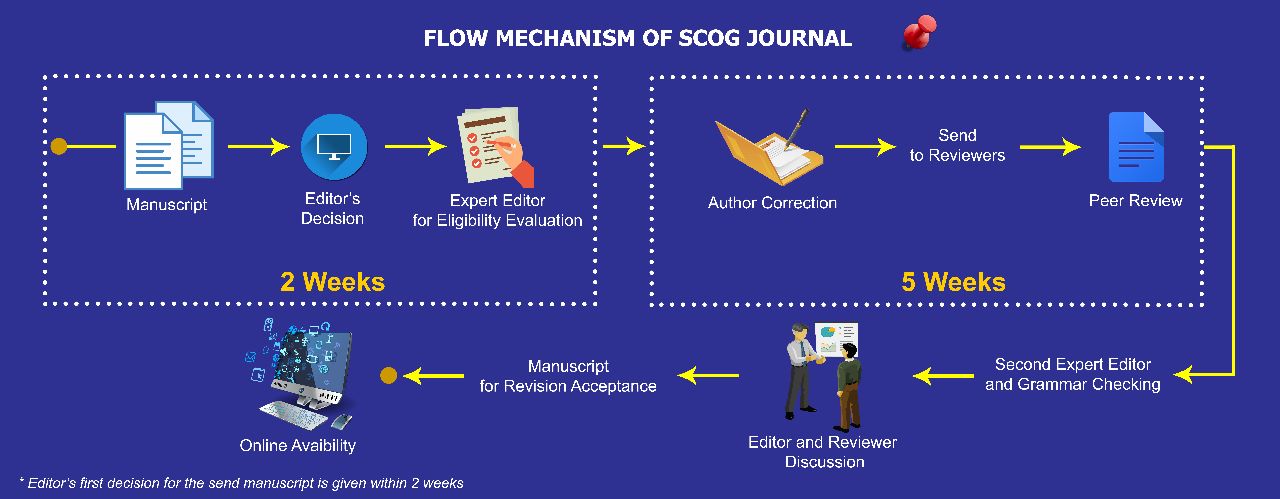Influence Of Feedstocks In Biodiesel Production On Its Physico-Chemical Properties Of Product : A Review
Abstract
Biodiesel is attracting increasing attention worldwide as a substituted petroleum diesel fuel or a blending component in transport sector. Biodiesel also become more attractive because of its environmental benefits and the fact that it is made from renewable resources. Biodiesel feedstock can be divided into four main categories: (i). Edible vegetable oi; (ii). Non-edible vegetable oil, (iii); Waste or used cooking oil; and (iv). Animal fats. There are two major factors to take into consideration when dealing with feedstock for biodiesel production i.e the source and composition. Biodiesel feedstocks have three main types of fatty acids as the main compounds that are present in a triglyceride: saturated (Cn:0), monounsaturated (Cn:1) and polyunsaturated (Cn:2,3). The overall biodiesel physicochemical properties are strongly influenced by the properties of individual fatty acid esters in biodiesel. Fatty acid composition varies for all biodiesel feedstocks that affected the product quality. Important fuel properties of biodiesel that are influenced by the fatty acid composition are viscosity, cetane number, heating/ calorific value, cloud point,and oxidation stability. Oxidation stability is one of the major issues influencing the use of biodiesel or FAME (fatty acid methyl ester), due to the nature of biodiesel, makes it more susceptible to oxidation or auto-oxidation during long-term storage than petroleum diesel fuel. The oxidation stability values of the biodiesel range from 0.4 hr (for the most unsaturated biodiesel, linseed) to 35.5 hr (for the most saturated one, coconut).
Keywords
Full Text:
PDFReferences
10Ahmad, A. L, Mat Yasin, N. H, Derek C. J. C,
Lim, J. K., (2011), Microalgae as a sustainable energy
source for biodiesel production: a review. Renew
Sustain Energy Rev, 15(1):584–93.
9Al-Zuhair, S., (2007), Production of biodiesel: possibilities
and challenges, Biofuels, Bioprod. Bioref.
:57–66)
2Asia/World Energy Outlook 2011, (2012), IEEJ
http://www.eneken.ieej.or.jp/data/4203.pdf.
24Atadashi, I. M., Aroua, M. K., Abdul Aziz, A.,
(2010), High quality biodiesel and its diesel engine
application: a review. Renew. Sustain. Energy Rev.,
(7):1999–2008.
31Atabani, A.E., Silitonga, A.S., Badrudin, I.A.,
Mahlia, T.M.I., Masjuki, H.H., Mekhilef, S., (2012),
A comprehensive review on biodiesel as an alternative
energy resource and its characteristics, Renew. Sustain.
Energy Rev., 16, 2070-2093.
35Ali, Y., Hanna, M.A., Cuppett, S.L., (1995), Fuel
properties of tallow and soybean oil esters. J. Am. Oil
Chem. Soc., 72:1557–1564
37Arumugam, S., Zinoviev, S., Foransiero, P.,
Miertus, S., Müller-Langer, F., Kaltschmitt,
M., Vogel, A., Thraen, D., (2007), BIO-FUELS:
Technology Status and Future Trends, Technology
Assessment and Decision Support Tools, International
Centre for Science and High Technology, United
Nations Industrial Development Organization Pure
& Applied Chemistry Area.
21Asia Pacific Economic Cooperation (APEC).
(2009), Establishment of the guidelines for the
development of biodiesel standards in the APEC region.
Avail-able from: http://www.tistr.or.th/APECwebsite/
Document/APEC%20BDF%20Guidelines.pdf; [cited
06.13].
6Balat, M. and Balat, H. (2008). A critical review
of bio-diesel as a vehicular fuel. Energy Convers.
Manage., 49:2727-2741.
19Balat, M. and Balat, H., (2010), Progress in biodiesel
processing,. Appl. Energy 87(6):1815–35.
26Balat, M.. (2011), Potential alternatives to edible oils
for biodiesel production – a review of current work,
Energy Convers. Manage., 52(2): 1479–92.
55Berman, P., Nizri, S., Wiesman, Z., (2011), Castor
oil biodiesel and its blends as alternative fuel. Biomass
Bioenergy, 35:2861−2866.
38Canakci M, Sanli H., (2010), Biodiesel production
from various feedstocks and their effects on the fuel
properties. J. Ind. Microbiol Biotechnol, 35, 431–41.
27Chisti, Y., (2007), Biodiesel from microalgae,
Biotechnol Adv., 25(3):294–306.
28Demirbas, A., (2011), Biodiesel from oilgae,
biofixation of carbon dioxide by microal-gae: a solution
to pollution problems. Appl. Energy, 88(10):3541–7.
34Demirbas, A., (2003), Biodiesel fuels from vegetable
oils via catalytic and non-catalytic supercritical alcohol
transesterifications and other methods: a survey, Energy
Conversion and Management, 44, 2093–2109.
44Demirbas, A., (2008), Relationships derived from
physical properties of vegetable oil and biodiesel fuels,
Fuel, 87(8–9):1743–8.
60E.N. Frankel, E. N., (1998), Lipid Oxidation, The
Oily Press, Dundee, Scotland.
13Friday, J. B., Okano, D., (2011), Calophyllum
inophyllum (kamani). Available from: http://www.
agroforestry.net/tti/Calophyllum-kamani.pdf. [cited
07.13].
52Geller, D. P.; Goodrum, J. W., (2004), Effects of
specific fatty acid methyl esters on diesel fuel lubricity.
Fuel, 83 (17-18), 2351-2356.
32Giakoumis*, E.G., (2013), A statistical investigation
of biodiesel physical and chemical properties, and
their correlation with the degree of unsaturation,
Renewable Energy”, 50, 858-878; doi: 10.1016/j.
renene.2012.07.04.
7Goering, E., Schwab, W., Daugherty, J, Pryde,
H., Heakin, J., (1982), Fuel properties of eleven
vegetable oils. Trans ASAE, 25:1472–83.
53Graboski, M.S., McCormick, R.L., (1998),
Combustion of fat and vegetable oil derived fuels
in diesel engines. Progr Energy Combust Sci,
:125−64.
23Janaun, J., Ellis, N., (2010), Perspectives on
biodiesel as a sustainable fuel. Renew. Sustain. Energy
Rev., 14(4):1312–20.
41Jain, S., Sharma, M.P., (2010), Biodiesel production
from Jatropha curcas oil. Renew. Sustain. Energy Rev.,
:3140–3147.
11Kafuku, G., Mbarawa, M., (2010), Biodiesel
production from Croton megalocarpus oil and its
process optimization, Fuel, 89:2556–60.
14Karmee, S. K, Chadha, A., (2005), Preparation of
biodiesel from crude oil of Pongamia pinnata. Bioresour.
Technol. 96(13):1425–9.
17Karmakar, A., Karmakar, S., Mukherjee, S.,
(2010), Properties of various plants and animals
feedstocks for biodiesel production. Bioresour.
Technol., 101(19):7201–10.
25Kibazohi, O., Sangwan, R.S., (2011), Vegetable
oil production potential from Jatropha curcas, Croton
megalocarpus, Aleurites moluccana, Moringa oleifera
and Pachira glabra: assessment of renewable energy
resources for bio-energy production in Africa. Biomass
Bioenergy, 35(3):1352–6.
59Kinast, A.J., (2001), Production of biodiesels from
multiple feedstocks and properties of biodiesels and
biodiesel-diesel blends. National Renewable Energy
Laboratory, Final Report, NREL/SR-510-31460.
22Kumar, B. P., Pohit, S., Kumar, R., (2010),.
Biodiesel from jatropha: can India meet the 20%
blending target?, Energy Policy, 38(3):1477–84.
47Knothe, G., (2005), Dependence of biodiesel fuel
properties on the structure of fatty acid alkyl esters.
Fuel Process Technology, 86 , 1059–1070.
51Knothe, G., Matheaus, A. C., Ryan, T. W., (2003),
Cetane numbers of branched and straight-chain fatty
esters determined in an ignition quality tester. Fuel,
(8), 971-975.
56Knothe, G., (2006), Analyzing biodiesel: standard
and other methods. JAOCS, 83:823–833.
61Leung, D. Y. C., Koo, B. C. P., Guo, Y., (2006),
Degradation of biodiesel under different storage conditions.
Bioresour. Tech., 97 (2), 250-256.
46Lin, B.F., Huang, J.H., Huang, D.Y., (2009),
Experimental study of the effects of vegetable oil methyl
ester on DI diesel engine performance characteristics
and pollutant emissions, Fuel, 88(9):1779–85.
20Lin, L., Cunshan, Z., Vittayapadung, S.,
Xiangqian, S., Mingdong, D., (2011), Opportunities
and challenges for biodiesel fuel,. Appl. Energy,
(4):1020–31.
39Lotero, E., Liu, Y., Lopez, D.E., Suwannakarn,
K., Bruce, D.A., Goodwinn, J.G., (2005), Synthesis
of Biodiesel via Acid Catalysis, Ind. Eng. Chem.
Res. 44, 5353-5363.
4Ma, F.; Hanna, M. A., (1999). Biodiesel production:
A review. Bioresour. Tech., 70 (1), 1-15
42Mittelbach, M. and Remschmidt, C., (2004),
Biodiesel, The Comprehensive Handbook, First
edition, Austria.
43Murugesan, A., Umarani, C., Chinnusamy, T.R.,
Krishnan, M., Subramanian, R., Neduzchezhain,
N., (2009), Production and analysis of bio-diesel from
non-edible oils – a review, Renew Sustain Energy Rev.,
(4):825–34.
57Mittelbach, M., Roth, G., Bergman, A., (1996),
Simultaneous gas chromatographic determination
of methanol and free glycerol in biodiesel.
Chromatographia, 42:431–434.
48Moser, B.R., (2009), Biodiesel Production, Properties
and Feedstock, In Vitro Cell Division Biology – Plant,
, 229 - 266.
54Pinzi, S., Leiva, D., Arzamendi, G., Gandia,
L.M., Dorado, M.P., (2011), Multiple response
optimization of vegetable oils fatty acid composition
to improve biodiesel physical properties. Biores
Technol,102:7280–7288.
8Quick, G.R., (1980), Developments in use of
vegetable oils as fuel for diesel engines, ASAE Paper
Number 80-1525, St. Joseph, MI:ASAE.
16Rashid, U., Anwar, F., Moser, B. R., Knothe, G.,
(2008), Moringa oleifera oil: a possible source of
biodiesel. Bioresour. Technol., 99(17):8175–9.
36Rao, P.V., Rao, G.S., (2013), Production and
Characterization of Jatropha Oil Methyl Ester, Int.
Jour. of Eng. Res., 2, 141-145.
62Sharma, Y.C., Singh, B. and Upadhyay, S.N.,
(2008), Advancements in development and characterization
of biodiesel: A review. Fuel, 87: 2355-2373.
33Sanford, S.D., White, J.M., Shah, P.S., Wee, C.,
Valverde, M.A. and Meier, G.R., (2009), “Feedstock
and Biodiesel Characteristics Report,” Renewable
Energy Group, Inc., www.regfuel.com.
49Ramirez-Verduzco, L.F., Rodriguez-Rodriguez,
J.E., Jaramillo-Jacob, A.D.R., (2012), Prediction
of cetane number, kinematic viscosity, density, and
higher heating value of biodiesel from its fatty acid
methyl ester composition, Fuel, 91:102–11.
50Rodrigues, J.A., Cardoso, F.P., Lachter, E.R.,
Estevao, L.R.M., Lima, E., Nascimento, R.S.V.,
(2006), Correlating chemical structure and physical
properties of vegetable oil esters. J. Am. Oil Chem.
Soc., 83:353–357.
40Shahid, E. M., Jamal, J., (2011), Production of
Biodiesel: a technical review, Renew. Sustain. Energy
Rev., 15, 4732-4745.
12Silitonga, A. S, Atabani, A. E,, Mahlia, T. M. I,,
Masjuki, H. H, Badruddin, I. A, Mekhilef, S. (2011),
A review on prospect of Jatropha curcas for biodiesel in
Indonesia. Renew Sustain Energy Rev, 15:3733–56.
18Shahid, E. M., Jamal, J., (2011), Production of
biodiesel: a technical review. Renew. Sustain. Energy
Rev., 15(9):4732–45.
15Singh, S. P., Singh, D., (2010), Biodiesel production
through the use of different sources and characterization
of oils and their esters as the substitute of diesel: a
review. Renew. Sustain. Energy Rev., 14(1):200–16.
1U.S Energy Information Administration:
International Energy Outlook 2011, (2011). http://
www.eia.gov/forecasts/ieo/pdf/0484%282011%29.
pdf.
45Uriarte, F. A., (2010), Biofuels from plant oils,
ASEAN Foundation, Jakarta, Indonesia, http://www.
aseanfoundation.org.dokuments/books/biofuel.pdf.
[cited 24.09.13].
5Van Gerpen, J., (2005), Biodiesel processing and
production, Fuel Process. Technol. 86, 1097–1107.
58Van Gerpen, J.H., Shanks, B., Pruszko, R.,
Clements, D., Knothe, G., (2004), Biodiesel
production technology. National Renewable Energy
Laboratory Report, NREL/SR-510-36244.
30Wang, R., Hanna, M.A., Zhou, W.W., Bhadury,
P.S., Chen, Q., Song, B.A., Yang, S., (2011), Production
and selected fuel properties of biodiesel from
promising non-edible oils: Euphorbia lathyris L.:
Sapium sebiferum L. and Jatropha curcas L. Bioresour.
Technol., 102(2):1194–9.
3WCO, (2007), The harmonized commodity description
and coding system (HS). World Customs Organization,
Brussels, Belgium.
29Yusuf, N.N.A.N., Kamarudin, S.K., Yaakub, Z.,
(2011), Overview on the current trends in biodiesel
production. Energy Convers. Manage., 52(7):2741–
DOI: https://doi.org/10.29017/SCOG.36.3.767

This work is licensed under a Creative Commons Attribution-NonCommercial-NoDerivatives 4.0 International License.






